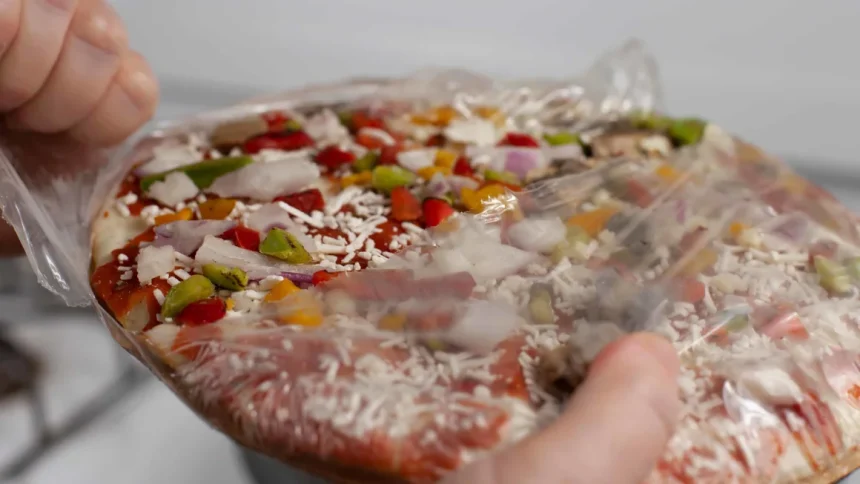Children and teens in the United States now get more than two-thirds of their calories from ultraprocessed foods, an analysis of almost two decades worth of data has found.
Ultraprocessed foods – such as frozen pizza, microwave meals, packaged snacks and desserts – accounted for 67% of calories consumed in 2018, up from 61% in 1999, according to research published in the medical journal JAMA Tuesday. The study analyzed the diet of 33,795 children and adolescents nationwide.

Drinking a little each week protects your heart if you have a cardiovascular condition, study finds
While industrial processing can keep food fresher longer and allow some foods to be fortified with vitamins, it modifies food to change its consistency, taste and color to make it more palatable, cheap and convenient – using processes that aren’t used in home-cooked meals. They are also aggressively marketed by the food industry.
“Some whole grain breads and dairy foods are ultra-processed, and they’re healthier than other ultra-processed foods,” said senior author Fang Fang Zhang, a nutrition and cancer epidemiologist at the Friedman School of Nutrition Science and Policy at Tufts University in Boston.
“But many ultra-processed foods are less healthy, with more sugar and salt, and less fiber, than unprocessed and minimally processed foods, and the increase in their consumption by children and teenagers is concerning.”

Avoid these ‘ultraprocessed’ foods and you might live longer
The information on children’s diets used in the study was collected annually by trained interviewers who asked the children or an adult acting on their behalf to detail what they had eaten in the preceding 24 hours. The information was gathered as part of the National Health and Nutrition Examination Survey.
Between 1999 and 2018, the proportion of healthier unprocessed or minimally processed foods decreased from 28.8% to 23.5% of consumed calories, the study found.
The remaining percentage of calories came from moderately processed foods such as cheese and canned fruits and vegetables, and flavor enhancers such as sugar, honey, maple syrup and butter, the study said.
The biggest increase in calories came from ready-to-eat or ready-to-heat meals such as takeout and frozen pizza and burgers: from 2.2% to 11.2% of calories, according to the study. The second largest increase came from packaged sweet snacks and desserts, the consumption of which grew from 10.6% to 12.9%.

Millions of peaches! How to make the most of summer’s best fruit
The link between child health and ultraprocessed food is complex but one recent study in the United Kingdom found that children who eat more ultraprocessed food are more likely to be overweight or obese as adults.
Experts said the study’s implications for future health were significant given that childhood is a critical period for biological development and forming dietary habits.
“The current food system is structured to promote overconsumption of ultra-processed foods through a variety of strategies, including price and promotions, aggressive marketing, including to youths and specifically Black and Latino youths, and high availability of these products in schools,” wrote Katie Meyer and Lindsey Smith Taillie, both assistant professors in the department of nutrition at the University of North Carolina’ Gillings School of Global Public Health, in a commentary on the study. They were not involved in the research.
Good news
There was good news that suggested efforts to tackle consumption of sugary drinks such as soda taxes had been effective: Calories from sugar-sweetened beverages dropped from 10.8% to 5.3% of overall calories.
“We need to mobilize the same energy and level of commitment when it comes to other unhealthy ultra-processed foods such as cakes, cookies, doughnuts and brownies,” said Zhang.

What you should know about the most underrated form of exercise
Black, non-Hispanic youths experienced a bigger increase in the proportion of ultra-processed foods in their diet compared to their White counterparts. The study said it did not assess trends in other racial or ethnic groups because of a lack of nationally representative data. However, it noted that Mexican American youths consume ultraprocessed foods at a consistently lower rate, which authors said could reflect more home cooking among Hispanic families.
The education level of parents or family income didn’t have any impact on the consumption of ultraprocessed foods, suggesting that they are commonplace in most children’s diets, the study added.
The authors said their study had some limitations: Asking people to recall what they ate isn’t always an accurate measure of dietary intake. Plus, there is a tendency to under report socially undesirable habits such as consumption of unhealthy food.
In addition, it can be a challenge to accurately classify ultraprocessed food because it requires a full list of ingredients – information unlikely to be given by children answering a questionnaire.
“Better methods for dietary assessment and classification of foods are needed to understand trends and mechanisms of action of ultra-processed food intake,” Mayer and Taillie wrote.







